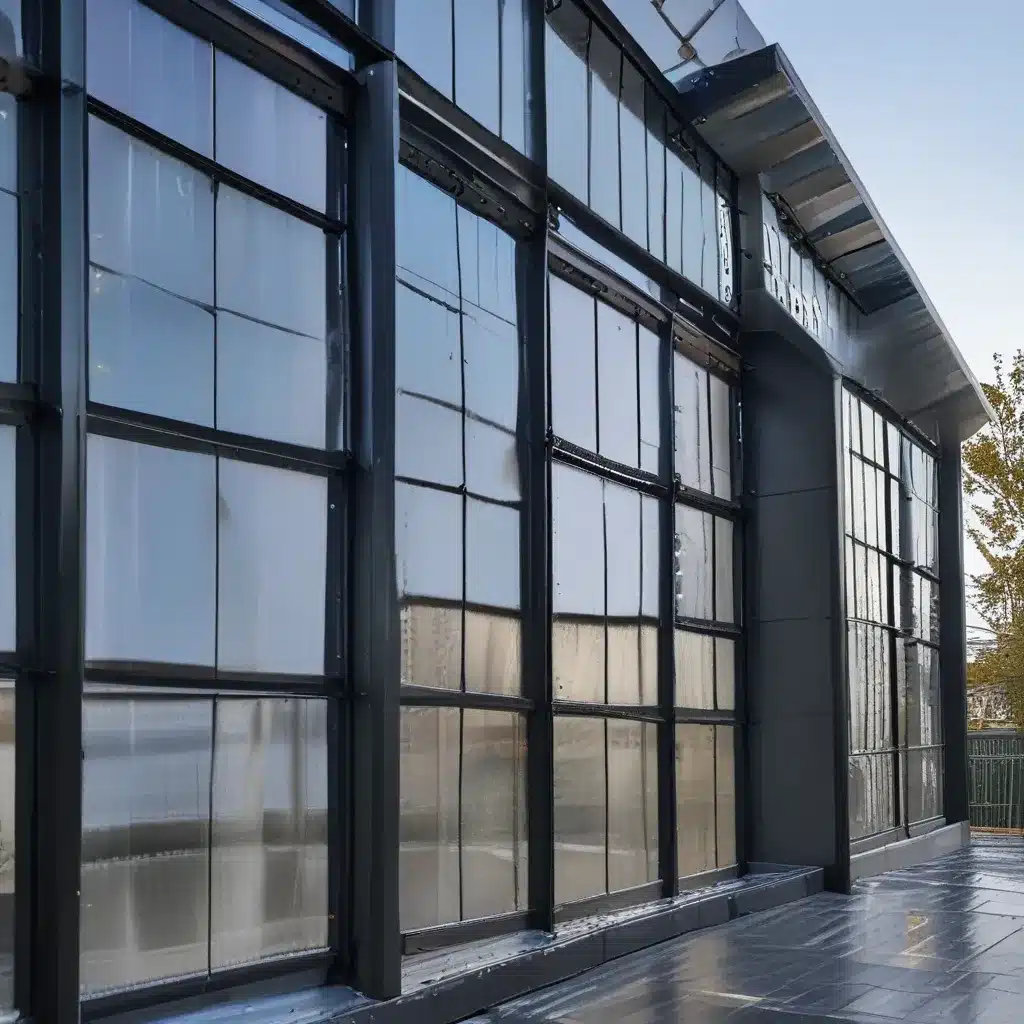
Reaching for the Sky: Harnessing the Sun’s Power in Our Homes and Buildings
As the world grapples with the urgent need to combat climate change, the search for sustainable energy solutions has never been more crucial. In this captivating exploration, we’ll delve into the cutting-edge technology of Building-Integrated Photovoltaics (BIPV) – a game-changing approach that’s redefining the way we harness the sun’s power and strive for net-zero energy structures.
Imagine a future where our homes and buildings seamlessly integrate solar technology, transforming the very fabric of our urban landscapes. This is the promise of BIPV, a revolutionary concept that’s poised to reshape the way we think about renewable energy.
The Rise of BIPV: From Rooftops to Facades
In the not-so-distant past, solar panels were typically relegated to the rooftops, a practical yet often visually uninspiring solution. But BIPV takes this concept to new heights, quite literally. By embedding photovoltaic cells directly into the building materials, such as windows, walls, and even facades, BIPV systems are capable of generating electricity while seamlessly blending into the architectural design.
Researchers have demonstrated the potential of BIPV systems to transform buildings into net-zero energy structures, where the renewable energy generated on-site meets or exceeds the total energy consumption. This paradigm shift in building design not only enhances the aesthetic appeal of structures but also empowers occupants to take an active role in sustainable energy production.
Unlocking the Potential of BIPV
The beauty of BIPV lies in its versatility. Unlike traditional rooftop solar panels, which can be limited by available roof space, BIPV systems can be integrated into various building components, including windows, walls, and even facades. This opens up a vast array of possibilities for architects, designers, and homeowners to harness the sun’s power in creative and visually stunning ways.
Imagine a skyscraper with a facade that seamlessly blends solar cells into the glass, generating renewable energy while maintaining a sleek, modern aesthetic. Or envision a residential home where the roof, walls, and even windows contribute to the overall energy production, transforming the building into a self-sustaining, net-zero powerhouse.
But BIPV’s benefits extend far beyond the visual appeal. By integrating solar technology directly into the building materials, BIPV systems can often achieve higher energy conversion efficiencies compared to traditional rooftop panels. This is because BIPV cells can be optimized for specific building orientations and angles, maximizing their exposure to sunlight throughout the day.
The Sustainability Equation: BIPV and Net Zero
The push for net-zero energy buildings is a global phenomenon, driven by the urgent need to reduce greenhouse gas emissions and create a more sustainable future. BIPV systems play a crucial role in this equation, offering a tangible solution to transform our built environments into self-sustaining, renewable energy powerhouses.
According to research, BIPV systems have the potential to generate enough on-site renewable energy to offset a building’s total energy consumption, effectively achieving net-zero status. This means that the energy produced by the BIPV system can match or even exceed the building’s energy demands, reducing the strain on traditional grid-supplied electricity and minimizing the carbon footprint of the structure.
Moreover, the integration of BIPV into building design can have a significant impact on the overall energy efficiency of the structure. By seamlessly incorporating solar technology, BIPV systems can contribute to improved insulation, thermal regulation, and natural lighting, further enhancing the building’s sustainability.
A Brighter Future: The Evolution of BIPV
As the world continues to embrace renewable energy solutions, the future of BIPV looks increasingly bright. Advancements in solar cell technology, building materials, and design integration are paving the way for even more innovative and efficient BIPV systems.
Companies like Solar A Systems Inc. are at the forefront of this revolution, offering cutting-edge BIPV solutions that redefine the boundaries of sustainable building design. Their expert team of engineers and architects work closely with clients to create customized BIPV systems that not only generate renewable energy but also enhance the aesthetic appeal and functionality of the structures.
From sleek, integrated solar windows to facade-spanning photovoltaic panels, the possibilities of BIPV are endless. And as the technology continues to evolve, we can expect to see even more breathtaking, energy-efficient buildings that seamlessly harness the power of the sun, bringing us one step closer to a sustainable, net-zero future.
Embracing the Solar Revolution: A Call to Action
As we grapple with the pressing challenges of climate change, the need for innovative, sustainable solutions has never been more urgent. BIPV represents a transformative approach that empowers us to rethink the way we design, build, and power our homes and buildings.
By embracing BIPV technology, we can not only reduce our reliance on fossil fuels and lower our carbon footprint but also create stunning, energy-efficient structures that inspire and captivate. It’s a call to action, a chance to be part of a solar revolution that will shape the skylines of tomorrow.
So, let’s take a step into the future and explore the boundless potential of BIPV. Together, we can redefine the way we live, work, and thrive in a world powered by the sun – a future where net-zero energy structures are no longer a dream, but a reality.


